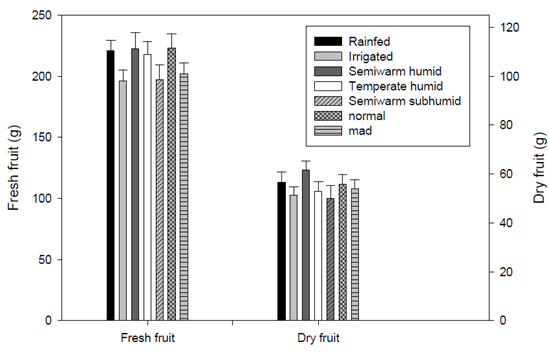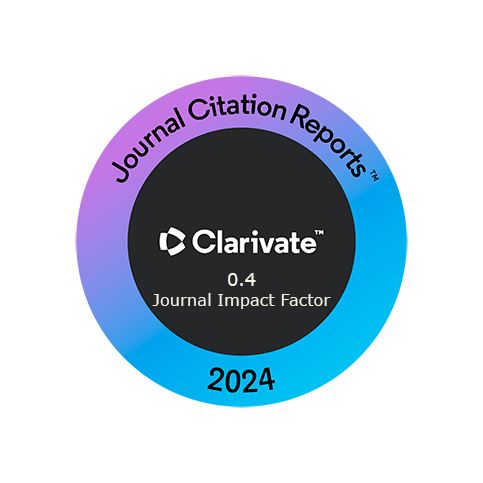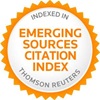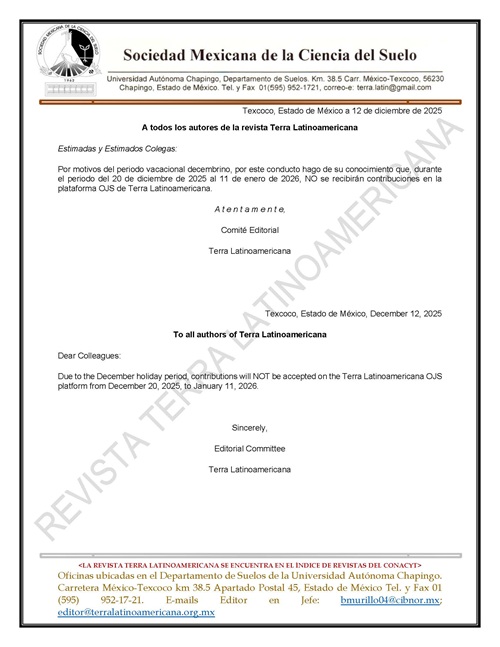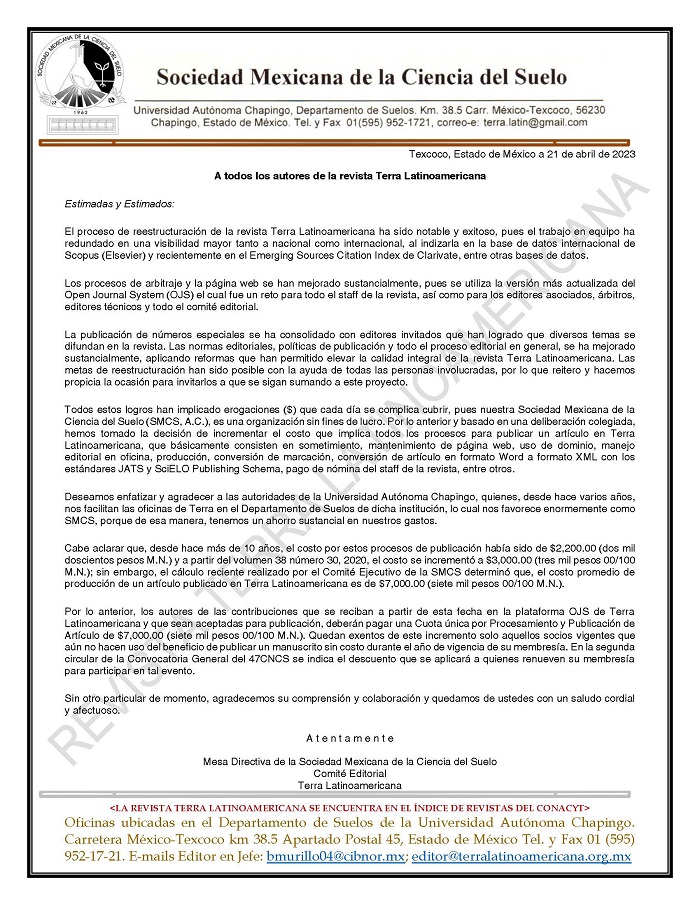Nutrient content in avocado fruits: Effect of climate, water management, and flowering type
DOI:
https://doi.org/10.28940/terra.v42i0.1916Keywords:
environment conditions, mineral composition, nutritional relationshipAbstract
Avocado is a fruit (Persea americana), that has increased its consumption worldwide. Mexico is the main producer and exporter of avocado in the world, representing more than 30% of the world harvest, of which 73.2% of the total avocado production in Mexico was concentrated in the state of Michoacán. In the state of Michoacán, there is a constant production of avocado fruit throughout the year, but this production is affected by the variation in climate, water management and flowering type, putting agricultural production and sustainable development at risk. The objective of this study was to evaluate the climatic effect, water management, and flowering type on fruit nutrient content in six orchards in the state of Michoacan. Six orchards were evaluated in the towns of Basilia, Cheranguerán, Tecario, Araparicuaro, Peribán and Patamburu in the state of Michoacan, which represent 90% of the climate types (TC), predominant in the state (ACW1, ACW2 and CW1)., with 100% of the water regime (irrigated and seasonal, RH) and 97% of the type of fruit produced (loca and normal, FF). The dry matter contents and total mineral content of the fruit were evaluated. The arrangement of treatments was a factorial [A= water regime (RH); B= type of climate (TC); C= floral flow (FF)], distributed completely randomly with 20 repetitions taking each tree as a repetition. The results indicated that the dry matter content is affected by TC, but not by RH and FF, FF affects the nutritional content more than TC and RH. The type of climate is the factor with the least impact on the mineral content of the fruit. In floral flow, the total nutritional content was significant in four elements with higher values for N, Cl, and Zn in crazy fruit and Na in normal fruit.
Downloads
Publication Facts
Reviewer profiles N/A
Author statements
- Academic society
- Terra Latinoamericana
- Publisher
- Mexican Society of Soil Science, C.A.
